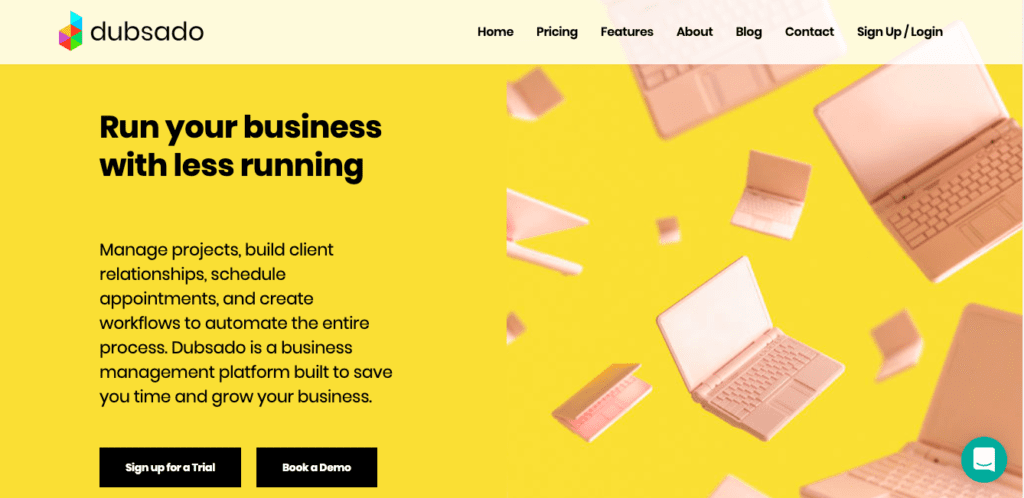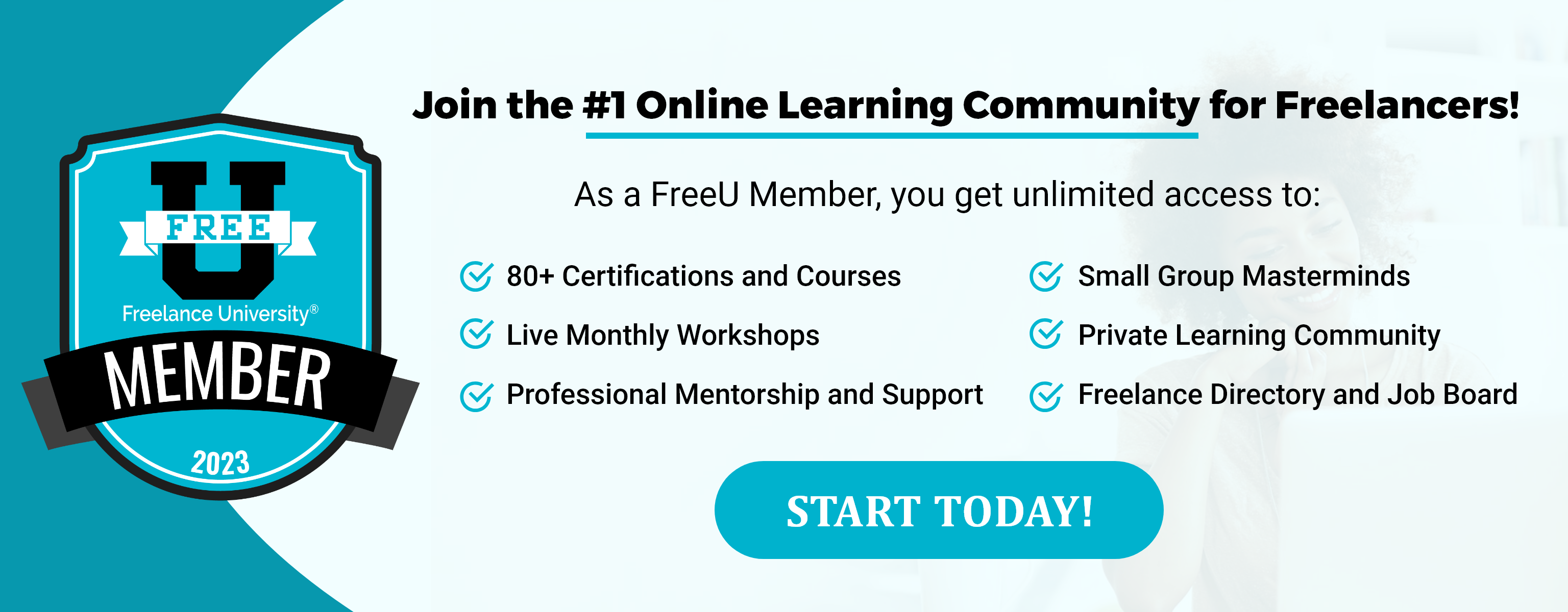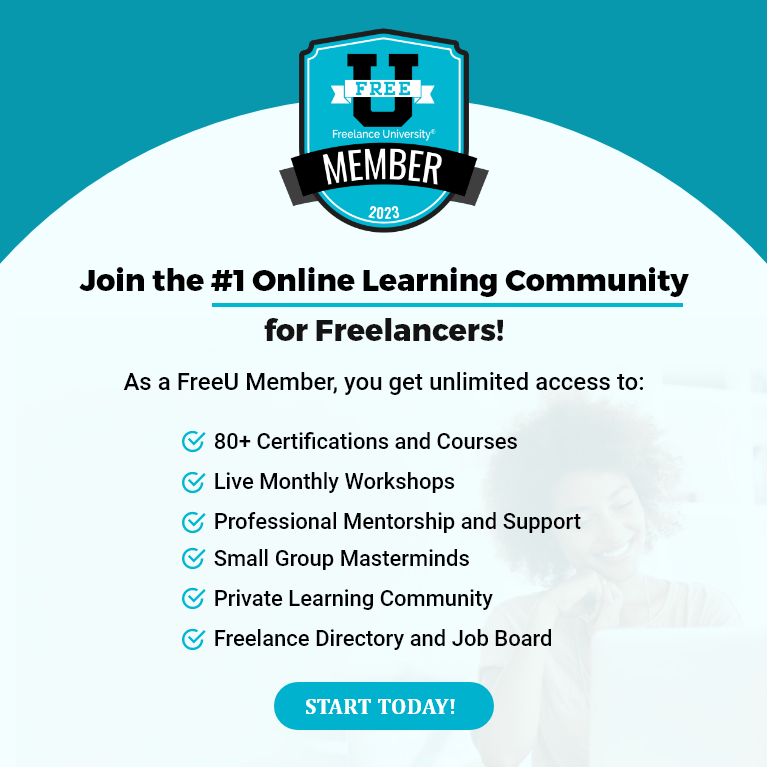A Guide to Writing Business Proposals for Clients
By Jena Kroeker
When I was asked to create a guide to writing business proposals for clients, the word “proposal” immediately reminded me of a marriage proposal. I tried to ignore the thought, but it kept popping into my head. And then I realized that in some ways, a freelance proposal is similar to a marriage proposal. Not that you’ll be asking your client to marry you, but business proposals often contain some of the same elements as marriage proposals.
Think about couples you may have seen on TV or social media and others you know personally. What do you notice about their proposals?
Some are done in sports stadiums in front of thousands of people. Some are done in the middle of a forest or on a mountaintop with a photographer present. Some you only hear about after the fact, with no video or pictures taken.
Most involve a ring or other piece of jewellery – something to symbolize the commitment. Most are tailored to suit the personality and style of the person being proposed to. Most involve a meaningful speech that describes the reality of the present relationship and possibilities for the future. And whether or not the person was expecting to be proposed to at that moment, he or she is usually ready for this next step in the relationship.
Furthermore, both a business proposal and a marriage proposal are delivered in hopes that the person receiving them will say yes! In both types of proposals, the person proposing hopes to stand out from the crowd and deliver a convincing argument that they’re worth signing up with.
So, let’s take a closer look at this process as a guide to writing business proposals for clients:
1. The relationship with your client is at an appropriate stage – ready for commitment.
Just like it would be awkward to propose to someone on the first date, it isn’t customary to present a business proposal at the first meeting with a client. You wouldn’t carry proposals in your pocket or purse at a networking event and hand them out like business cards.
Indeed, in an article titled “How to Write a Proposal: The Last Guide You’ll Ever Need,” Sujan Patel says, “A good sales proposal should never be a surprise. Instead, it should feel like the next logical step in the conversations you’ve been having with your prospect and the relationship you’ve been building.”
He also stresses that sales proposals aren’t always necessary or even appropriate and provides this valuable advice:
“Only serious prospects should get sales proposals. If you’ve got a tire kicker or someone in the early stages of their exploration, save your effort until they’re further down the pipeline.
“Do you have a realistic shot at winning the business? Is your prospect actually looking for a solution like yours? Do they really have the budget? Time saved not writing proposals for poor-fit prospects is time that can be spent seeking out better buyers.”
Meredith Hart describes the difference between solicited and unsolicited business proposals in her article, “How to Write a Business Proposal [Tips & Examples].” Solicited business proposals are requested by a prospective client with an RFP (request for proposal). Unsolicited business proposals involve approaching a potential client with a proposal even if they haven’t requested one.
Particularly with unsolicited business proposals, you’ll want to be sensitive to whether or not it’s appropriate to submit one. As we advise in a previous blog post, “How to Find Ideal Clients (in Your Own Backyard),” it’s important to feel out situations before promoting your virtual services.
2. You know the potential client enough to understand what he or she needs.
Here’s where things are a bit different in the business world. You may not have the luxury of spending extended time with prospective clients to figure out their needs. You may need to do some research to learn more about them.
So, before writing your proposal, ensure you have all the background information you need. This research begins during your initial contact with a prospective client. Whether you’re finding out about a particular project through an RFP or have simply identified a gap you can fill in their business, listen to clients well. Gain a thorough understanding of the nature and scope of the project and any pain points they’re experiencing. Observe their preferences and personality. Look up their website, social media presence, and any other online information.
Brainstorm a list of questions you can ask at your next in-person meeting or in an email exchange. In an article titled “15 questions to ask before you create a client proposal,” Raubi Marie Perilli suggests asking what a client’s goals are for a project:
“If a client is hiring a freelancer or consultant to work for them, they need something. They have a goal they want to achieve. Discuss these plans with them. If they can’t define a clear project goal, guide them. Give them examples of how your work can help them.”
Perilli says you can also phrase the question as “What is the problem I can help you solve,” and attach specific goals to their need.
Other things to research are the nature of the client’s business, their target audience, their competitors, the project budget and timeline. These and other facts can help you gain a picture of what type of help a client needs.
3. You know what you can bring to the client relationship.
Any healthy relationship is a two-way street. In marriage proposals, people often describe not only what they receive from the relationship, but what they’re planning to give. Ideally they have a clear sense of who they are and what they’re capable of offering.
In the same way, before you write a freelance proposal, it’s important to have a clear sense of how your business relates to your prospective client. You should know exactly what you’re offering:
• Which of your services are applicable to the project and the client’s needs?
• What rates do you charge for those services?
• Will you be incurring any expenses?
• How long will it take you to do the work?
In a marriage proposal, it would be less effective to quote testimonials like “You should marry me because my Mom thinks I’m cool,” or “My friend Ted thinks we’re perfect together.” But in business, client testimonials speak volumes. So if you’ve been a freelancer or virtual assistant for a while, be sure to include testimonials from past and present clients, as well as some samples of your work.
And as you’re describing what your business offers, remember to speak clients’ language from their point of view. In her article, “4 smart moves for winning your next freelance proposal,” Renae Gregoire suggests putting yourself in the client’s shoes to analyze a project. She also recommends making the proposal less about you and more about the client.
She says, “While it’s good to introduce yourself, you also want to stand out from the crowd by showing the client that you’ve thought about the work, have an idea of what’s needed, and will help her achieve the results she’s looking for. Make the proposal all about HER, and speak to what you’ve gathered from your evaluation.”
4. The method of delivering your proposal is both unique and appropriate.
Another way to say this is that you want your proposal to make you stand out without seeming too weird! And you don’t want to scare away your potential client. Marriage proposals are usually planned to suit the person being proposed to. If someone is painfully shy and dislikes being the center of attention, it’s unlikely his or her proposal would occur on the jumbotron at a full sports stadium. And someone with hay fever and a phobia of mosquitoes would most likely be spared a proposal in the great outdoors.
Similarly, it’s important to choose an appropriate template and communication channel for a business proposal. As you research and get to know your potential client, figure out how he or she would like to receive the proposal. Since technology provides many different communication channels, be sensitive to clients’ preferences and choose a method that resonates with them. Some may want to receive proposals via special software like Dubsado or Bidsketch, others via a simple email or Word document, and still others through video.
If proposal software is appropriate, Dubsado (https://www.dubsado.com/) is a great option that’s free for up to three clients or leads. For more than three, you can switch to a paid plan that starts at $35/month USD. Either use Dubado’s templates or import your own and customize the proposal to suit your brand. The advantage of this tool is that clients can simply use one form to choose your services, sign the contract, and pay the invoice. Dubsado offers many more business management features and is worth checking out.

Bidsketch (https://www.bidsketch.com/) is dedicated solely to proposals and offers a unique option to receive one year free if you sign up and email an honest review of Bidsketch by providing the URL of your blog. Paid plans start at $15/month.

Use your own custom HTML/CSS designs or Bidsketch’s built-in professional proposal templates. You also have the option to include your own company domain and allow for electronic signing. Receive notifications when a potential client views your proposal and automate approval messages to guide the client to the next step in the onboarding process.
5. Proposals are designed to make your client say yes!
And the best way to make anyone say yes is to be authentic. You need to sell yourself, but you also need to be sincere and truthful. Sincerity comes from an honest understanding of yourself and the client, and a realistic view of how your services relate to their needs.
Resist the temptation to shorten timelines in order to impress a client and compete with others. Offer only what you know you can deliver without stressing yourself out or running the risk of missing a deadline.
And be mindful of what style you’re using in the proposal. Avoid using a salesy or impersonal tone. Be yourself and imagine that the client is sitting right in front of you. Professional yet personable is a good rule of thumb to use when choosing a tone.
Final Thoughts
As you can see, business proposals are similar, but not identical to marriage proposals. Usually the prospective bride or groom says yes, while potential business clients may say no. But by being authentic and gaining a clear understanding of the client’s needs, you can raise your chances of receiving a yes answer.
And as Meredith Hart says in the article above, “Don’t be afraid to let your company’s personality to shine through in your proposal. Stay true to your brand and show the client what sets you apart from your competitors.”
We hope this guide to writing business proposals for clients has given you food for thought and inspired ways to make your freelance or virtual assistant business stand out from the crowd. We’d love to hear your ideas and any tips from your experience. Please share your thoughts in the comments below!










































































































